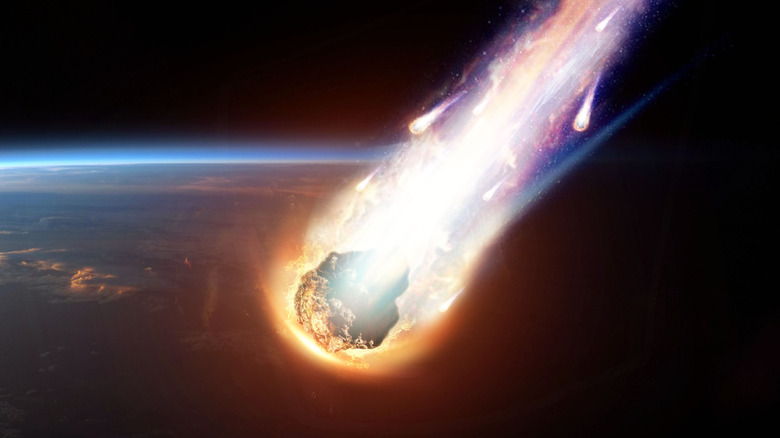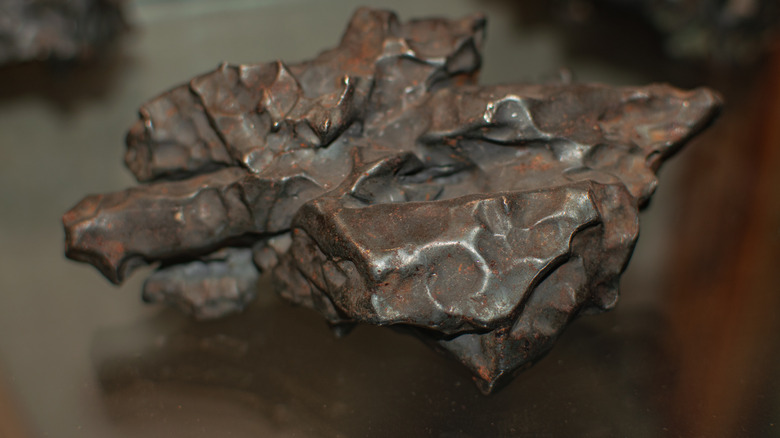Research Says Asteroid Impacts Produced Rare Kind Of Diamond Material On Earth
Asteroid impacts are usually seen as cataclysmic events and that's not entirely shocking, as one such episode some 65 million years ago wiped dinosaurs off the face of the Earth (via USGS). Destruction aside, the extreme temperature and pressure conditions at the site of an asteroid impact also create novel materials like diamonds. New research courtesy of experts from University College London suggests that an asteroid collision can also trigger the formation of diamond-like materials with unexpected physical and chemical properties.
The findings, which appear in "Proceedings of the National Academy of Sciences," detail an advanced analysis of the mineral called lonsdaleite originating from the Canyon Diablo iron meteorite. So far, scientists have known that the hexagonal geometry of lonsdaleite is what sets it apart from the cubic geometry of regular diamonds, but a fresh analysis has revealed that the mineral in question also has "graphene-like intergrowths." And since there are two types of crystal growths happening here, this one falls in the category of minerals called diaphites.
The diaphite's nature grants it spectroscopic features that haven't been encountered before. The unique structures observed in the lonsdaleite sample are seen as a gateway for creating materials that are extremely hard in addition to electrically malleable, which means their properties can be adjusted based on the requirements of any given application. Scientists are also hoping that a deeper analysis of the diamond-graphite composite structure will help them gain a better understanding of the extreme temperature and pressure conditions created at the site of an asteroid impact.
Diamonds are not really rare
The researchers speculate that such advanced materials "may result in new applications ranging from abrasives and electronics to nanomedicine and laser technology." Coming back to lonsdaleite — which is named after famed crystallographer Kathleen Lonsdale — a 2016 research published in Nature mentioned that violent meteorite and asteroid collisions can lead to the synthesis of diamond and lonsdaleite by spontaneous compression of graphite. The research served to explain why lonsdaleite crystals are commonly found around meteor impact sites.
As part of the aforementioned research, scientists managed to create lonsdaleite in a lab using high-powered laser beams, mimicking the conditions created by an impact event. Russia's Crater of Diamonds – one of the largest diamond fields in the world — was also created by an asteroid impact that punched a crater around 60 miles across in size (via NASA). The massive pressure and heat generated during the event turned graphite flakes into diamonds in areas as far as approximately 8 miles away from the collision site.
However, diamonds are not merely created at impact sites, but they are also found deep within the impact agents themselves. Electron microscope analysis of the Sutter's Mill meteorite revealed large diamonds in its matrix, according to NASA. Another study from 2020 that was published in PNAS mentioned that diamonds are also formed when small planets — in their early days — collide with each other or an asteroid. Coming to extreme cases, the planet Cancri 55e is thought to be made mostly of diamonds.

